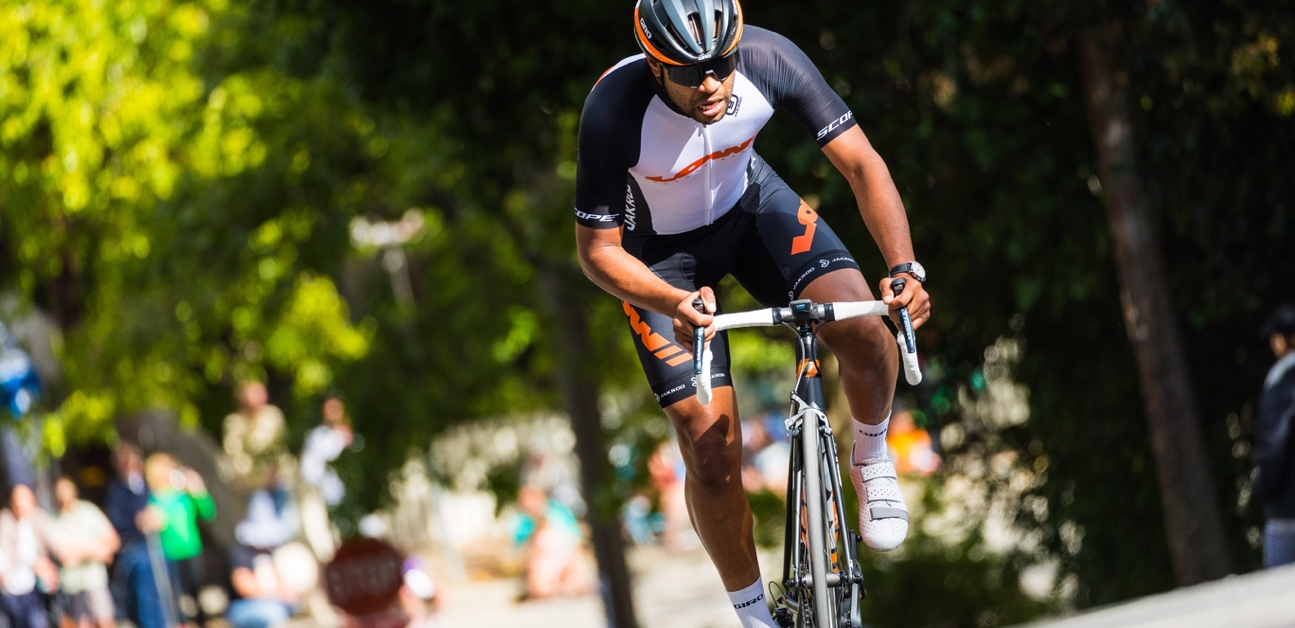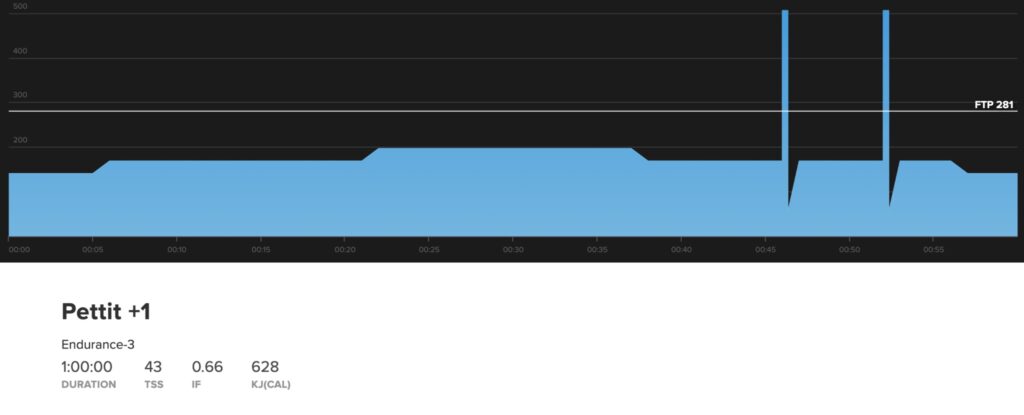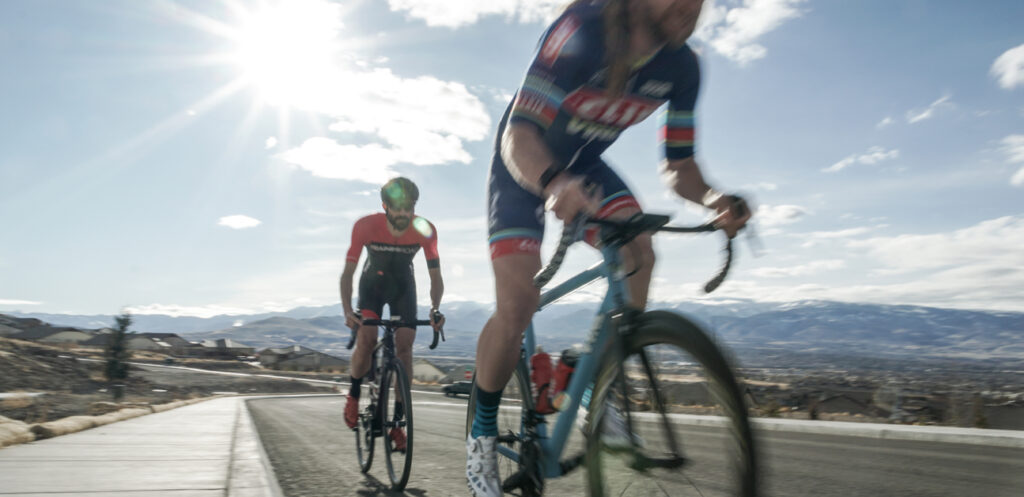The Neuromuscular Power Zone: What It Is and Why It Matters for Cyclists

The body has three energy systems. As an endurance sport, cycling focuses on the aerobic system. But for those quick moments when peak power output is needed, it’s all about neuromuscular power zone. This article will cover how it works, how you use it, and what you can do to train it.
Key Takeaways
- The neuromuscular power zone uses stored ATP and creatine phosphate to create energy anaerobically.
- This energy system is used for maximum power output and lasts no more than fifteen seconds.
- Riding in this zone depletes energy stores and needs recovery to recharge.
- Training this energy system includes strength training.
What is the Neuromuscular Power Zone?
Technically the neuromuscular power zone uses the phosphocreatine or ATP-PC energy system. However, to keep things simple, cyclists typically refer to the power zone instead of the specific energy system, since that is its primary application on the bike. This energy system is the fastest to provide energy to working muscles and powers maximum efforts lasting less than fifteen seconds.
How Do You Power the Neuromuscular Zone?
Your body stores a small amount of adenosine triphosphate (ATP) in the muscles. All cells in the body use ATP as fuel by breaking one of its three phosphate chemical bonds, resulting in energy for the cell and adenosine diphosphate (ADP) as a byproduct. This system creates energy anaerobically using stored ATP.
Adaptive Training
Get the right workout, every time with training that adapts to you.
Check Out TrainerRoadIn the first few moments of exercise or starting a hard effort, the working muscles use the stored ATP for a quick burst of energy. However, this only lasts for about two seconds. To further fuel the muscles, the ATP-PC energy system creates more ATP by using ADP and creatine phosphate. Enzymes remove a phosphate atom from the creatine phosphate and join it to the ADP. This recycling of ADP to ATP only lasts about ten seconds as creatine phosphate is exhausted.
Recharging Neuromuscular Power
We can think of this energy system as a high-powered battery. It puts out a lot of energy and doesn’t last long, but it is rechargeable. Once creatine phosphate is used up, the anaerobic energy system takes over as the primary ATP provider. The good news is that these stores are replenished over time with rest—a few minutes.
A few things affect the rate of replenishment of creatine phosphate—the extent of depletion, muscle acidosis, and muscle fiber type. This means that the neuromuscular energy system takes longer to recharge if you’ve heavily depleted creatine phosphate stores. Muscle acidosis is caused by the body’s inability to clear the byproducts from the anaerobic energy system. So if the intensity of your activity remains high, the body will have a difficult time replenishing both creatine phosphate and ATP.
While they both create energy without oxygen, the neuromuscular and anaerobic energy systems differ significantly. The neuromuscular system doesn’t use the process of glycolysis, and as a result, does not produce lactate or cause muscle acidosis. This is why it’s also called the alatic system.
Why the Neuromuscular Power Zone is Important for Cyclists
Any action that requires quick energy uses the neuromuscular power zone. But in cycling, the most important use is short bursts of maximal power. Whether it’s a full-on sprint or a hard kick to get over a steep climb, you’re riding in this power zone. Since it’s used in a minimal timeframe, cyclists are in it the least of all power zones. But when you do, it’s usually at the most critical points in a race.
The problem is that rest or low intensity is required to ride more in the neuromuscular power zone, which is why peak sprint power reduces with repeated sprints. This is why cyclists try to protect their sprint, saving it for the most decisive moment.
How Cyclists Train the Neuromuscular Power Zone
Training the neuromuscular system is quite a bit different than training the other two energy systems. The reason for the difference is that the ATP-PC system is the least adaptable of the three. The only way to increase ATP-PC stores is to increase muscle mass or supplement with creatine. However, recent research suggests that a stronger aerobic system can influence the rate of recovery.
As cycling is an endurance sport, the aerobic energy system is the most vital. Building a robust aerobic engine is beneficial in the way that cyclists use the neuromuscular energy system. The higher your aerobic fitness, the less you will need to rely on the other two systems. This helps you in saving that peak power when you need it most. All of TrainerRoad’s training plans work to strengthen your aerobic fitness.
Increasing Peak Power
Peak cycling power is a mix of fitness, biomechanics, and technique. The best way to develop neuromuscular power is to increase your efficiency through a combination of strength training and pedaling drills. To increase your peak power output, you’ll need to train the amount of torque and your rate of cadence change.
In terms of maximum power, it’s helpful to think of torque as how you recruit all your available fast-twitch muscle fibers and cadence as the speed that you apply it. The good news for anyone who wants to increase their maximum power is that both of these things are highly trainable.
Example Neuromuscular Workouts
Maximum power sprints are best practiced outdoors and not on the trainer. The fixed position of the trainer doesn’t allow you to recruit the same muscles when you rock the bike back and forth. These drills can help increase muscle strength and coordination. However, several TrainerRoad workouts feature form sprints like Pettit +1.

Stomps
These standing-start sprints consist of slowly turning over a big gear as forcefully as possible to recruit as many muscle fibers as you can. Done from a near-stop, pick the hardest gear you can turn over without exceeding 90rpm in 12 pedal strokes. Aim for five stomp efforts during your ride. These should last 10-12 seconds with plenty of rest in between. You can complete these drills sitting or standing.
Form Sprints
When you practice rapid cadence changes, you are establishing and strengthening neuromuscular pathways, leading to increased coordination and effective torque application. One of the best ways to practice on the bike is with form sprints. This low-power drill is simple to do. Just pick a mid-range to light gear and then wind your cadence up as quickly as possible. Your goal is to go from a normal cadence to your max cadence in as little time as possible and then hold it for about ten seconds. Practice them seating and standing.
Aerobic vs. Anaerobic vs. Neuromuscular
Each of the three energy systems is key to cycling performance but each one produces energy differently. The dividing line between them is time, fuel source, and oxygen. The aerobic system uses oxygen, glucose, and fats to produce energy slowly but it can do so for a long time. The anaerobic system creates energy quickly from glucose but only for a short time frame. The neuromuscular power zone uses the ATP-PC or alatic system and is the quickest to provide power and only lasts up to fifteen seconds using stored ATP and creatine phosphate.
More on Energy Systems
For more cycling training knowledge, listen to Ask a Cycling Coach — the only podcast dedicated to making you a faster cyclist. New episodes are released weekly.

